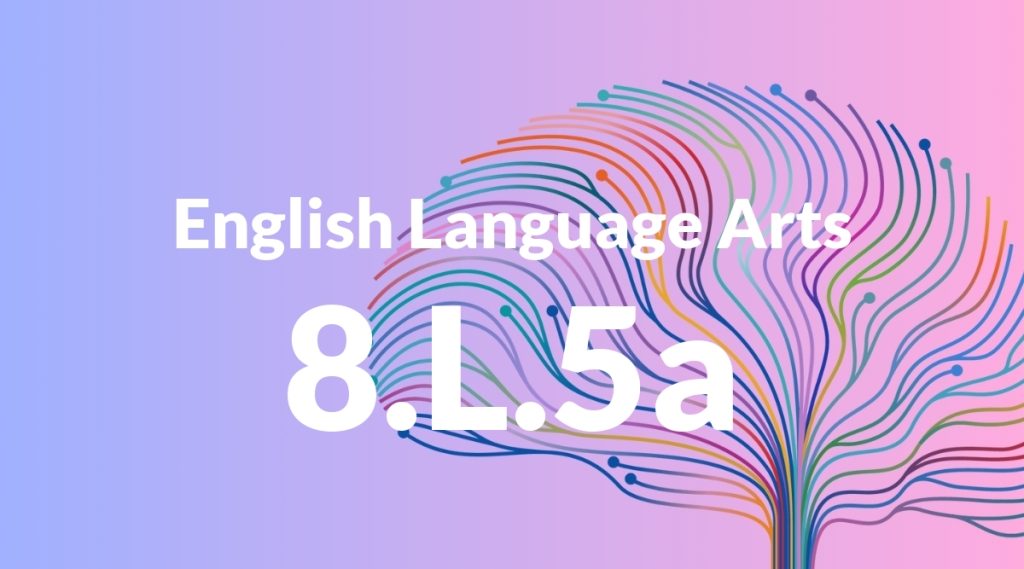Standard: 8.L.5a – Interpret figures of speech (e.g. verbal irony, puns) in context.
Grade level: Grade 8
Subject: English Language Arts
Domain: Language
Teacher Overview
This standard focuses on helping students interpret figures of speech, such as verbal irony and puns, in context. Understanding these language devices is crucial for literary analysis and enhances students’ comprehension and appreciation of texts. Students should already be familiar with basic literary devices like similes, metaphors, and hyperbole. They should be able to identify and explain these devices in simpler texts before tackling more complex figures of speech.
After mastering this standard, students will be able to analyze more complex texts and understand how authors use language creatively to convey deeper meanings. This skill will enhance their overall literary analysis and critical thinking abilities.
Common Misconception 1
One common misconception is that students may interpret all figures of speech literally, missing the intended figurative meaning. This can lead to misunderstandings of the text.
Intervention 1
To address this, teachers can use side-by-side comparisons of literal and figurative language, helping students see the difference and understand the figurative meanings.
Common Misconception 2
Another misconception is that students may confuse different types of figures of speech, such as irony and sarcasm, leading to incorrect interpretations.
Intervention 2
Teachers can provide clear definitions, examples, and practice exercises that focus on distinguishing between different figures of speech, reinforcing the correct identification and interpretation.
Prerequisite Knowledge
Students should have a basic understanding of common literary devices and figures of speech, such as similes, metaphors, and hyperbole. They should also be able to identify these devices in simple texts.
Subsequent Knowledge
Students will develop the ability to analyze more complex literary texts and understand the nuanced use of language by authors. They will also improve their critical thinking and interpretative skills.
Instructional Activities
- Analyze excerpts from literature that use verbal irony and puns.
- Create a classroom activity where students come up with their own puns.
- Watch movie clips and identify examples of verbal irony.
- Discuss idiomatic expressions and their meanings in different contexts.




